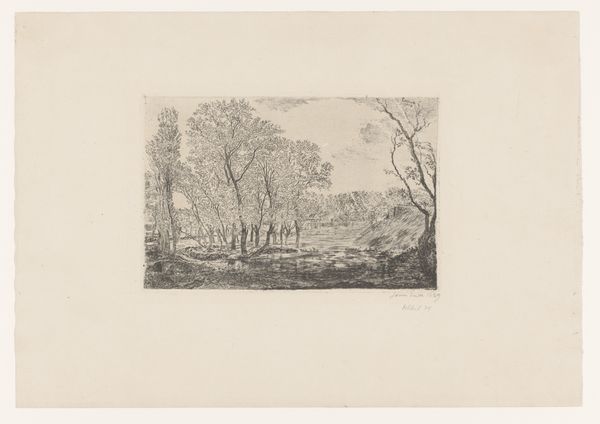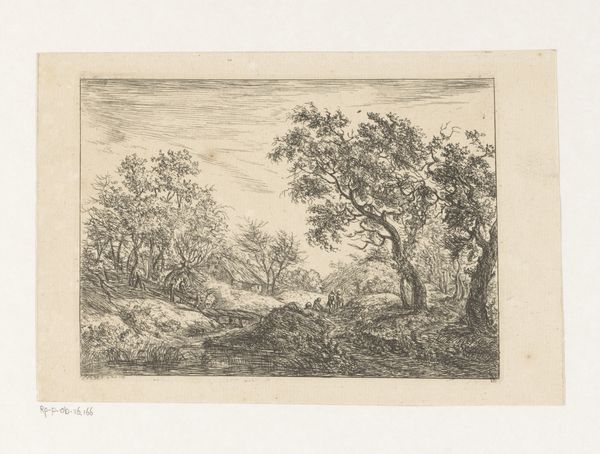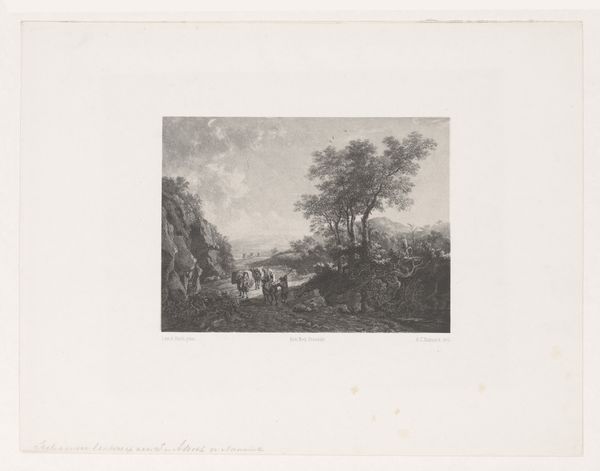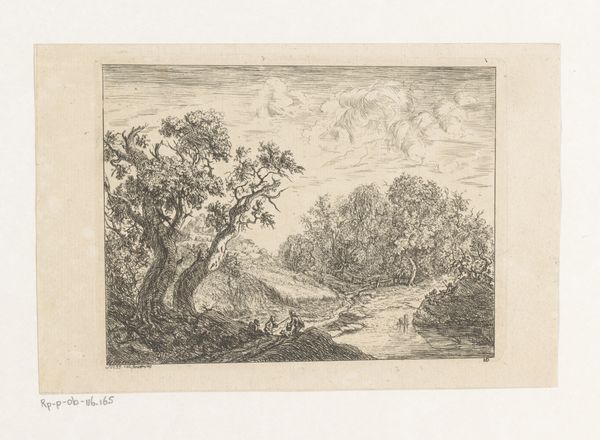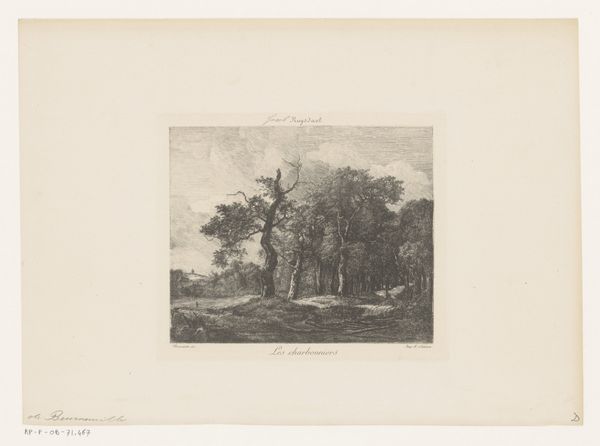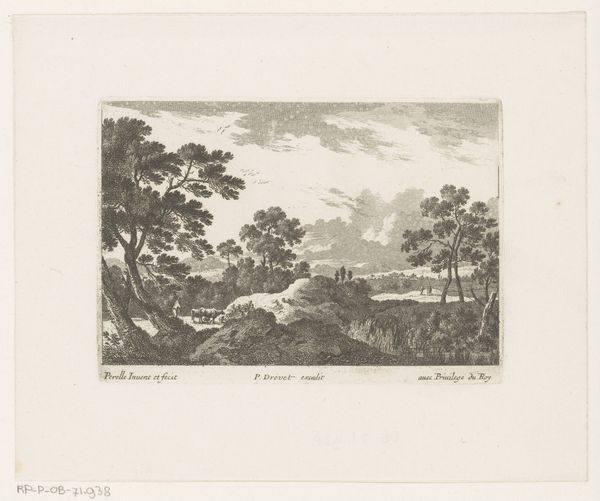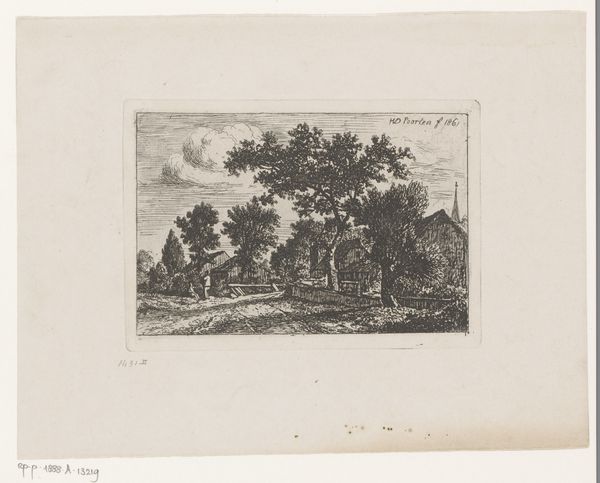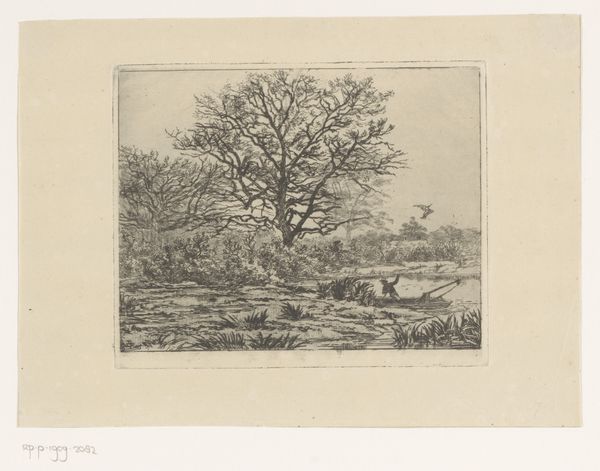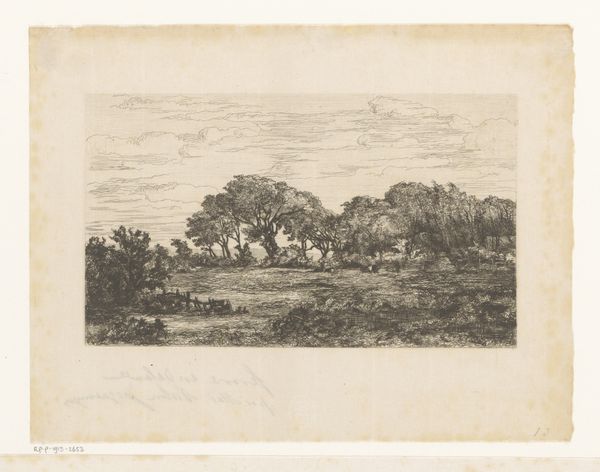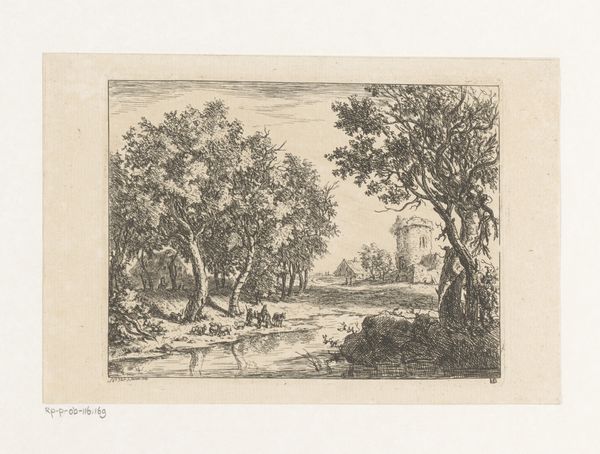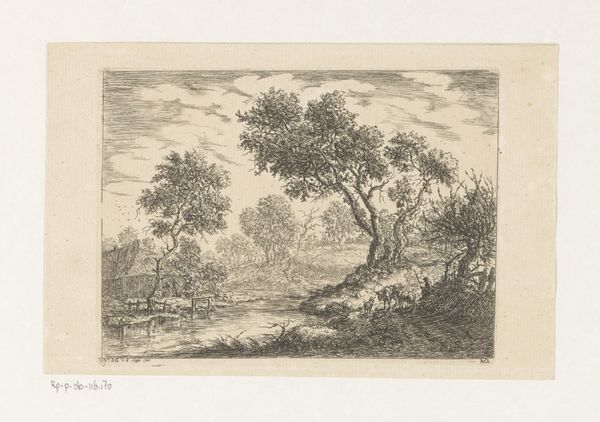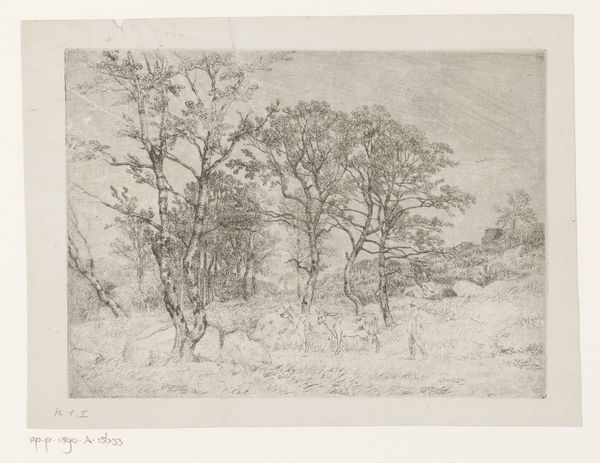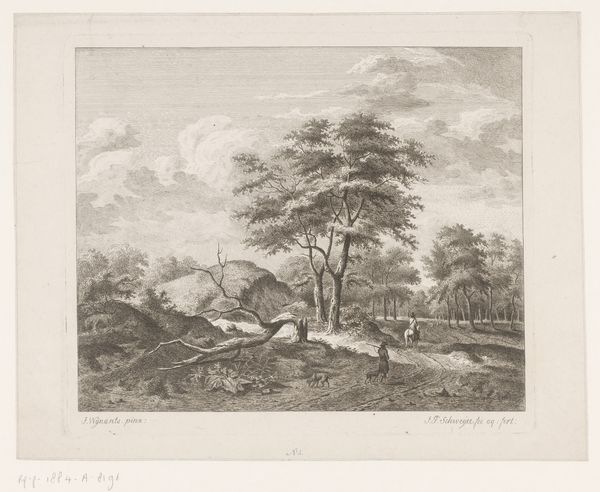
drawing, paper, ink, pencil
#
drawing
#
pencil sketch
#
landscape
#
paper
#
ink
#
forest
#
pencil
#
pencil work
#
history-painting
#
realism
Dimensions: height 220 mm, width 275 mm
Copyright: Rijks Museum: Open Domain
Curator: Looking at Gerrit Jan Michaelis' "Wooded Landscape with Fence and Seated Figure" from 1849, crafted with pencil and ink on paper, I’m struck by its rather melancholic stillness. Editor: I agree, it feels hushed. The overall composition draws me in with the trees acting as a frame, drawing your eye into the background, but it does it so softly. Curator: This quietness mirrors the pervasive mood in Dutch landscape art of the period. Michaelis, though less known than some, contributes to a visual language tied to national identity, reflecting a deep connection with the land, which was obviously romanticized. The period followed significant political upheaval. The Netherlands had become a constitutional monarchy in 1848, so pastoral paintings provided images of cultural and national recovery after conflict. Editor: From a purely formal perspective, the way he's used varied line weights—darker, denser strokes for the trees in the foreground and light, feathery ones for the sky—creates depth without resorting to heavy chiaroscuro. The human figure on the bottom is placed just off-center and is balanced perfectly with the negative space on the top. The work offers great formal refinement in terms of asymmetry. Curator: The figure is an intriguing presence; not prominent, yet anchoring the scene. One must ask who she is, a land worker? Part of the owner family of this forest area? Maybe an observer, just like us? Editor: The slightly blurred quality almost obscures detail, lending a sense of timelessness. Did the artist do that to emphasize form and mood? The subtle blurring emphasizes the overall landscape, adding a feeling that extends beyond the concrete narrative. Curator: Indeed, blurring allows the focus to stay on nature. Artists could then evoke feelings of historical importance connected to national strength, tradition, and perseverance during trying political times. Editor: For me, this unassuming landscape speaks volumes through its technical restraint, an example of less is more, and creates such a mood! Curator: It certainly does create a space for reflection on nature. Michaelis' rendering is historically vital, capturing both societal ideals and personal interpretations of a constantly shifting society.
Comments
No comments
Be the first to comment and join the conversation on the ultimate creative platform.
